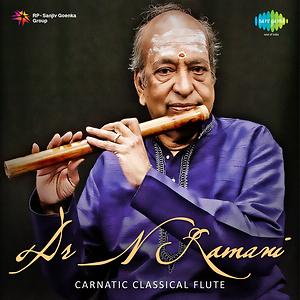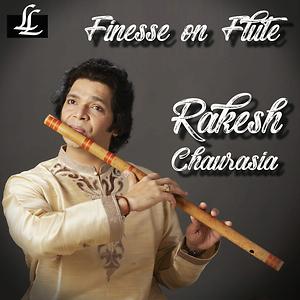
Its importance and operation is discussed in the Sanskrit text Natya Shastra. It is referred to as nadi and tunava in the Rigveda and other Vedic texts of Hinduism. It is an aerophone produced from bamboo, used in Hindustani classical music. Related Tags - Bansuri Dhun, Bansuri Dhun Song, Bansuri Dhun MP3 Song, Bansuri Dhun MP3, Download Bansuri Dhun Song, Sandip Jangid Bansuri Dhun Song, Holi Ki Dhamal - 2 Bansuri Dhun Song, Bansuri Dhun.Bansi Ki Dhun (Latst Krishna Bhajan) Album Name: Kali Kamli Wala Mera Yaar Hai Meri Vinti Yahi Hai Radha Rani By Chitra Vichitra Moye Hori Mein Kar Gayo Tang.A bansuri is a side blown flute originating from the Indian subcontinent. Bansuri Dhun song from the album Holi Ki Dhamal - 2 is released on Jan The duration of song is This song is sung by Sandip Jangid.
Odhe Ghoonghat Pat Radha Jamuna Ke Tat Panghat Pe Bharan Jal Aayi Re Aayi Murali Ki Taan Jaise Koi Toofan Radha Chunari Sambhal Nahi Payi ReBarish Ki Dun MP3 & MP4 Free Download. Suno Kanha Ne Bansuri Bajaayee Re Payal Radha Ki Chhanan Chhan Kayi Re. Bansuri Ki Madharu Dhun Aayi Re Tann Mann Ki Sudh Bisrayi Re.

Bansuri Ki Dhun Mp3 Mod For Warcraft
Description: Naruto Ninpou 6.7 WarCraft 3 maps downloads, reviews, and more information.DOWNLOAD & Set Beautiful, Bansuri, Radha krishna, Flute, Most popular, Famous, Flute music ringtone for FREE on your Android (mp3) or iPhone mobile.The bansuri-like flute is depicted in ancient Buddhist, Hindu and Jain temple paintings and reliefs, and is common in the iconography of the Hindu god Krishna. Shri Krishna Bansuri Ki Dhun Mp3 Song Download Windows Vista Highly Compressed 80 Mb Captain Cool The Ms Dhoni Story Pdf Download Download Nada Sms Blackberry Dota 2 remake 3vs3 is a mod for Warcraft III: Frozen Throne, created by MixiSoft. The traditional design features no mechanical keys, and the musician creates the notes they want by tapping the various finger holes. Longer bansuris feature deeper tones and lower pitches.
A phonetically similar name for the same instrument, in early medieval texts, is the Sanskrit word vaṃśi which is derived from root vaṃśa (Sanskrit: वंश ) meaning bamboo. The word bansuri originates in the bans (बाँस) + sur (सुर). The early medieval Indian texts also refer to it as vaṃśi, while in medieval Indonesian Hindu and Buddhist arts, as well as temple carvings in Java and Bali dated to be from pre-10th century period, this transverse flute has been called wangsi or bangsi. However, the instrument is also common among other traditions such as Shaivism. These legends sometimes use alternate names for this wind instrument, such as the murali. The bansuri is revered as Lord Krishna's divine instrument and is often associated with Krishna's Rasa lila dance.

It is, however, not clear whether there was any connection between the Indian and Chinese varieties. However, a flute of a somewhat different design is evidenced in ancient China ( dizi) which Powell, quoting Curt Sachs' The History of Musical Instruments, suggests may not have originated in China but evolved from a more ancient Central Asian flute design. It is likely, states Powell, that the modern Indian bansuri has not changed much since the early medieval era. Of these, the transverse flute (side blown) appeared only in ancient India, while the fipple flutes are found in all three. According to legends the three birthplaces of flutes are Egypt, Greece, and India. History According to Ardal Powell, flute is a simple instrument found in numerous ancient cultures.

These are particularly found in the northeastern (near Assam, Arunachal Pradesh, Meghalaya, Manipur, Mizoram, Nagaland, Sikkim, Tripura) and Western Ghats (near Kerala) states of India where numerous bamboo species grow with internodal lengths greater than 40 centimetres (16 in). These grow abundantly in Himalayan foothills up to about 11,000 feet with high rainfall. Construction Bansuri is traditionally made from bamboo.A bansuri is traditionally produced from a special type of bamboo, that naturally grows to long lengths between its nodes (knots). This change in the relevance and style of bansuri is likely, states Nettl, because of the arrival of Islamic rule era on the Indian subcontinent and the West Asian influence on North Indian music. However, beginning in the 15th century, vertical end blowing style are commonly represented.
The distance of a finger-hole from the mouth-hole, and the diameter of the finger-hole controls the note it plays. The burnt-in holes are then finished by sanding, one end plugged, the flute ringed at various positions to stabilize its form and shape over time and the unit tested for its musical performance. Drilling and other methods of hole making are avoided as it is believed they damage the fiber orientation and the splits affects the music quality. They mark the exact positions for the holes, then use hot metal rod skewers of different diameters to burn in the holes. Once ready, the artisans examine the smoothness and straightness and measure the dried hollow tube.
As with other air-reed wind instruments, the sound of a bansuri is generated from resonance of the air column inside it. Because the transverse variety enables superior control, variations and embellishments, it is preferred in Indian classical music. The fipple flute is usually played in folk music and is held at the lips like a tin whistle. There are two varieties of bansuri: transverse and fipple. Once all the holes have reached their performance range, the bansuri is steeped in natural oils, cleaned, dried and decorated or bound with silk or nylon threads. The wall thickness of the bansuri determines the tone, range and octave tuning.
For example, in a bansuri where Sa or the tonic is always played by closing the first three holes, is equivalent to C, one can play sheet music by creating a finger notation that corresponds to different notes. In order to play the diatonic scale on a bansuri, one needs to find where the notes lie. Either finger tips or finger pads are used by bansuri players to partially or fully cover the tap holes. Octaves are varied by manipulating one's embouchure and controlling the blowing strength. The 'sa' (on the Indian sargam scale, or equivalent 'do' on the octave) note is obtained by covering the first three holes from the blowing-hole. Half-holing is employed to play flat or minor notes.
Classical musical instruments. ^ a b Suneera Kasliwal (2004). Vedic Index of Names and Subjects. ^ a b Arthur Berriedale Keith (1995).
Kalatattvakosa: A Lexicon of Fundamental Concepts of the Indian Arts. ^ Bettina Bäumer Kapila Vatsyayan (1988). ^ a b c Ashok Damodar Ranade 2006, pp. 284–286.
University Press of America. Early Buddhist Narrative Art: Illustrations of the Life of the Buddha from Central Asia to China, Korea and Japan. Exploring the World of Music: An Introduction to Music from a World Music Perspective.


 0 kommentar(er)
0 kommentar(er)
